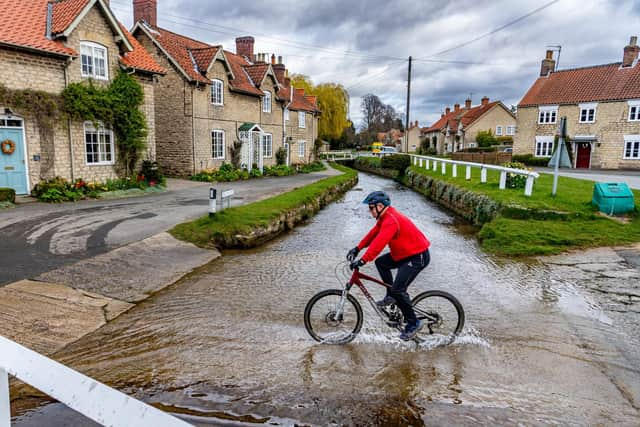Why the closure of village primary schools is symbolic of wider plague blighting rural communities - Sarah Todd
Far be it from this writer to look at former Prime Minister Tony Blair through rose-tinted spectacles. But when he was on the cusp of coming to power, at the 1996 Labour Party conference, he famously declared his top three priorities would be ‘education, education and education’.
When was the last time readers heard somebody in power talking about the next generation’s education?
Advertisement
Hide AdAdvertisement
Hide AdInner-cities will be having it tough; the challenges teachers face will be very real. But it’s a mistake to presume that rural communities are all roses around the door.


Just the other week it was announced that the primary school in the chocolate box North Yorkshire village of Hovingham (birthplace of the Duchess of Kent) has no pupils and looks set to close. How sad. The cynic within sees that as recently as April this year Hovingham was named as one of the prime villages to live for those wanting to escape the rat race in The Sunday Times Best Places to Live Guide 2022.
Are such accolades a poisoned chalice? To try to look at the wider picture, village school closures have been coming thick and fast.
This must, on some level, be a reflection on the huge changes that rural villages have undergone over the last few years. A small cottage came on the market in the village where we have lived for over 20 years and where The Daughter went to school. She daydreamed over the local paper's property advertisements about being able to buy it. Truth is, it’s probably already been snapped up by an investor to turn into a holiday let. A whole generation of young country-bred people will probably never be able to afford to live in the villages where they were born. This forced migration out of the sticks is decimating the demographic of our rural areas.
Advertisement
Hide AdAdvertisement
Hide AdMost people moving into villages seem to be either a) from the south b) affluent retirees or c) investors snapping up potential holiday homes. None are much cop at supporting village schools. The odds are on the wealthy southerners, if they have any children, ferrying them off to be educated privately. And as for the affluent retirees and the investors, they’re bringing nothing to the table when it comes to the village school.
Sometimes it seems the only way country schools can attract pupils is by jumping through enough red-tape to make a vicar swear and being praised by Ofsted inspectors. But let’s face it; ticking the politically correct boxes of a school inspection doesn’t necessarily equal happy kids or a well-rounded education.
Mathematical formulae isn’t this correspondent’s strong point, but surely there is a simple equation of thriving village school = affordable housing divided by supportive local education authority (or something along those lines).
But then, there is a fine line to balance - perhaps another equation? - of affordable housing divided into retaining the picture-postcard charm of our rural communities.
Advertisement
Hide AdAdvertisement
Hide AdIt just doesn’t seem fair on a younger generation who have grown up in a rural area not to have the chance to live and educate their offspring in a way that mirrors their own childhoods. Two of the happiest years of this old romantic’s formative years were spent at a ‘failing’ village primary school where there were only six of us in a class - five lads and this flame-haired incomer. We seemed to spend all our days biking, playing football, conkering, sledging (depending on the seasons), along with a bit of story writing and painting thrown in for good measure. That school went on to thrive and it can be no coincidence that pockets of new housing were allowed and many alumni were able to stay in the area and send their own children up those same steps. It still has, 40 years on, a real sense of rural community. Of grandparents and parents who were pupils remaining an integral part of the patchwork of the school, and wider community, not having been priced out of their village.
Because of the new housing, fresh faces moved in and they were welcomed because they were young and supported the village and the school. Rural housing needs have been brushed under the carpet for far too long. It’s hard not to be a NIMBY (Not In My Back Yard) when it comes to planning applications; so many are poorly thought out and seem to subtract rather than add anything. But a balance needs to be found. King Charles III has taken planners to task and promoted rural housing affordability for years. Here’s hoping Prince William - a father of three school-age children - will pick up the mantle and keep campaigning on this issue.
One thing’s for sure, the stronger a school’s ties (whether it’s an inner-city comprehensive or a village primary) to the surrounding community the better for everyone.
Sarah Todd is a former editor of Yorkshire Life magazine. She is a farmer’s daughter, mother and journalist specialising in country life